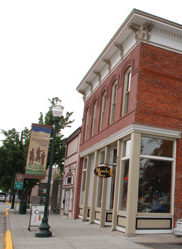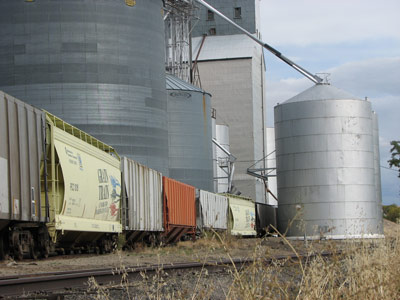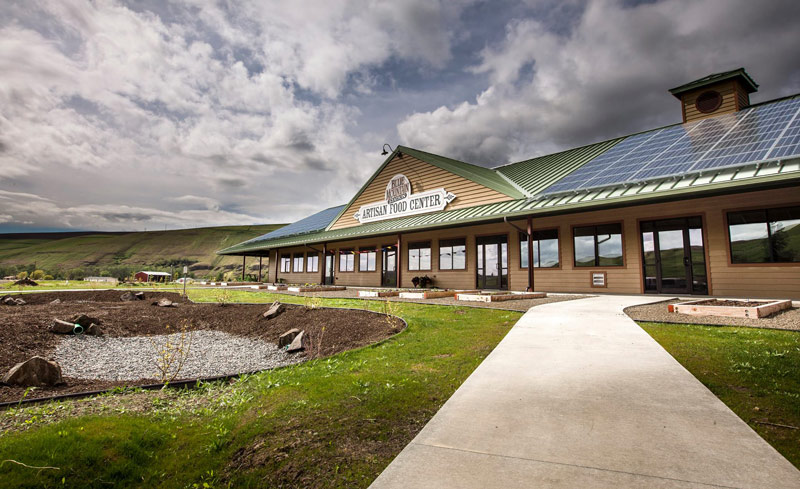
Our Port District was formed in 1958 with an eye toward potential new grain shipping opportunities on the Snake River as the dams were being constructed, as well as other transportation and industrial development possibilities.
Chamber of Commerce proposed the new district and put it to a vote of the people. It passed 1,260 “for” to 316 “against.”
Since that time, the Port district has created an important economic footprint in our county, evolving with the times to try and serve the changing needs in our rural community.
In the early years, property adjacent to the Snake River was acquired and then sold for the development of the Lyons Ferry Grain Terminal, where to this day barges are still loaded with grain and shipped down the river. The Port played an important role in facilitating this development by working with what was called the Lower Snake River Ports. Together these Ports maximized opportunities along the changing riverbank.
In the late 1960s and early 1970s, the Port began working with the US Army Corps of Engineers on development of the Lyons Ferry Marina facility.
Maintaining recreation opportunities along the Snake River during dam construction was very important to area residents, and we are regularly reminded that it remains important today. The Port just signed a new 25-year lease with the Corps for operation of the marina facility. The Port subleases the property to a private business that operates as a KOA, employs both year-round and seasonal workers, and draws recreationalists from across the region.
In the 1980s and 1990s, Columbia County continued to suffer from changes in the agricultural economy.
Mechanization and efficiency left fewer ag employment opportunities and caused young people to leave the community to seek employment; consolidation of ag businesses left Main Street with empty storefronts; the Green Giant cannery ceased canning peas and slashed its workforce. Columbia County needed help. The Port stepped up and purchased what was called the Oliver Farm on the west end of town and began development of the Rock Hill Industrial Park. Slowly but surely, infrastructure was installed and buildings were constructed. Businesses began locating here – some homegrown, some from out of the area. Today the Rock Hill Industrial Park houses 9 buildings with 16 business tenants that employ almost 70 people.




In the 1980s and 1990s, Columbia County continued to suffer from changes in the agricultural economy.
Mechanization and efficiency left fewer ag employment opportunities and caused young people to leave the community to seek employment; consolidation of ag businesses left Main Street with empty storefronts; the Green Giant cannery ceased canning peas and slashed its workforce. Columbia County needed help. The Port stepped up and purchased what was called the Oliver Farm on the west end of town and began development of the Rock Hill Industrial Park. Slowly but surely, infrastructure was installed and buildings were constructed. Businesses began locating here – some homegrown, some from out of the area. Today the Rock Hill Industrial Park houses 9 buildings with 16 business tenants that employ almost 70 people.
In 1996, the region suffered a devastating flood, which washed out a portion of the Union Pacific Rail Line that served Dayton, and more specifically carried precious cans of asparagus out to the world for the Green Giant cannery.
Revenue on short-line railroads was already in decline nation-wide, and this line was no exception. In order to get the line fixed and allow Green Giant to resume shipping, a deal was made and the line was donated to the Port of Columbia. The Port now owns 37 miles of rail line, 30 of which are in Walla Walla County.
In 2007, a marketing study was conducted to identify a niche market to pursue for business development and attraction.
The result was the idea for Blue Mountain Station. The Port purchased what was known as the Bell Farm, a 28-acre parcel adjacent to Highway 12, the Port-owned rail line, and city services. We have now installed infrastructure on 8 acres and constructed the Artisan Food Center, which is home to 6 businesses and a commercial kitchen. BMS Building #2 was completed in October 2018 and houses one business. The goal with this project is to support value-added ag businesses, entrepreneurs, and small farmers from across the region. Our residents value their agricultural history, and this project builds on that sector.
The Port also became the lead economic development agency for Columbia County in 2014 and hired a full-time economic development coordinator. This has greatly expanded our reach, and gives us the capacity to work with all shapes and sizes of businesses. The Port is proud to have been a part of our evolving economy, adapting our services to fit the needs of the community as the decades roll on. We look forward to many more challenges and successes.

